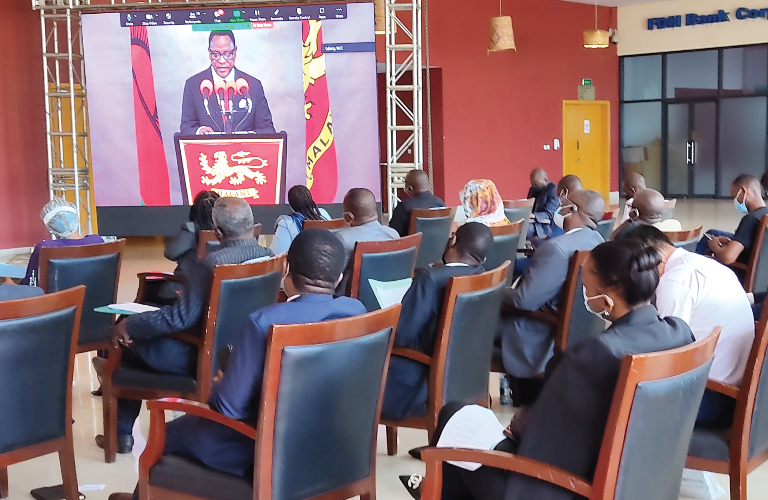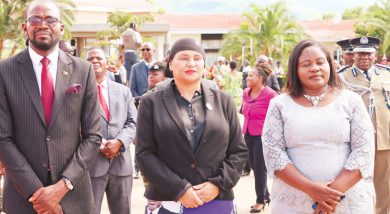Strategy set to double exports
President Lazarus Chakwera yesterday committed to ensure that the five-year National Export Strategy II (NES II) is implemented to double exports from about 10 percent of the import ratio to 20 percent and transform the country’s economy.
He was speaking virtually from Kamuzu Palace in Lilongwe when he launched the NES II that will cost $37.8 million (about K30.9 billion) to be implemented from 2021 to 2026.

The President said for NES II to bear fruits, bottlenecks towards increasing exports need to be addressed to make the country’s products competitive on the global market.
Chakwera said he has instituted an inter-ministerial committee led by Deputy Secretary to the President and Cabinet Janet Banda to ensure all such bottlenecks are dealt with.
The second generation NES is expected to build on key lessons learnt from the first strategy, which was launched in 2012 and expired in 2018. Malawi exports as a share of imports were at 32.6 percent and the rate of growth of exports in value terms averaged 4.2 percent during the implementation period.
Speaking at a hybrid event at Bingu International Convention Centre in Lilongwe, Minister of Trade Sosten Gwengwe admitted that the transport cost takes much of import and export costs, rendering our exports uncompetitive in regional and global markets.
He said: “The road transport is still a dominant mode of transport for our imports and exports, a situation which needs to be reversed through massive investments in transport sector to achieve our dream of turning Malawi into an export-oriented economy.
“In this regard, I will work closely with the Ministry of Transport to ensure that Malawi establishes and uses the most optimal and economic transport corridor to the sea that will lead to massive reduction in import and export costs”.
Gwengwe conceded that some of the priority areas mentioned in the NES II such as mining and manufacturing require a lot of energy which needs huge investments in the sector.
Speaking virtually, Enhanced Integrated Framework executive director Ratnakar Adhikari, whose organisation is under the World Trade Organisation, urged Malawi to use the NES II to build a robust sustained economic growth.
He urged government to leverage on the strategy to address binding constraints towards achieving the goals and aspirations embedded in the Malawi 2063, the country’s long-term development blue print.
“NES II will provide an impetus for Malawi to improve on its exports and improve its competitiveness,” Adhikari said.
In his presentation, Ministry of Trade economist Cuthbert Wadonda Chirwa said the country is riddled with slower economic growth, declining exports at 1.1 percent growth rate in 2020 and a widening balance of trade at $1.9 billion (K1.5 trillion) in 2020.
When it was launched in 2013, NES was set to raise exports as a share of imports from 51.5 percent in 2010 to 75.7 percent in 2017.
This was expected to be achieved by ensuring an increased rate of growth of exports in value terms from nine percent annually between 2001 and 2011 to 13 percent per year from 2013 to 2017 through diversification of exports into higher value-addition.
In 2010, the country’s trade deficit was $1.1 billion (K907 billion), around 21 percent of gross domestic product (GDP), a rise from seven percent of GDP in 2001.





